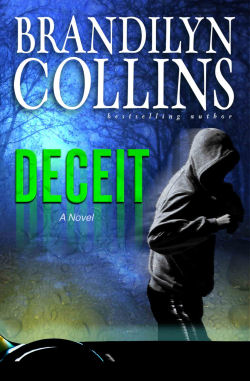|
One
of the hardest challenges we novelists face is portraying characters’
emotions fully and completely. Often we don’t go deep enough. Oh, the
novel may be published. But the scenes don’t ring as true to life as
they could, don’t grab the reader by the neck and pull him into the
story. How can we dig deeper? By exploring all the “colors” of human
emotions in our stories.
One common weakness is to
portray each emotion as an entity unto itself. In real life, human
emotions are much more convoluted. Think of an emotion as a necklace of
little beads. Standing back from the necklace, you might see it as
basically yellow. But come closer and you’ll distinguish the beads that
make the overall appearance. Many beads will be yellow, although in
various shades. But others may be green or blue or red, even black. In
the same way, any human emotion is made up of many smaller and varied
feelings, sometimes even contradictory ones. Too often as writers, we
“stand back” from our characters’ emotions and see only its main color.
If you want to portray an
emotion to its utmost, focus not on the emotion itself but on the
varied “colors” of other emotions that comprise it. For example, love
may show itself through anticipation, disappointment, pride in the
loved one’s accomplishments, expectation, jealousy, and many more.
You can even portray the
emotion’s opposite. Does your protagonist love someone deeply? Then
take that character to a moment of hatred for that person. Love can
reveal itself through hate, given the right circumstances. But this has
to unfold naturally, as one conflict after another arises, and many
other feelings will come between the love and hate. In the same way joy
can reveal itself through sorrow, courage through fear, trust through
doubt.
Sometimes you can take the
character’s emotion to its opposite in one key scene. Let’s say your
character, a middle-aged woman, is deeply in love with her husband. In
the last few months, however, he’s begun to treat her badly, staying
out late at night with no explanation, ignoring her needs. She’s afraid
he’s having an affair. She’s been patient, saying she loves him and
trying meet his needs. Finally, she’s had enough. She must woo her
husband back. One night she makes a special dinner for him and squeezes
herself into a sexy dress. She has extracted from him the promise that
he’ll come home immediately from work. But he fails to arrive on time.
She waits. The dinner grows cold. She grows cold in her skimpy dress
and adds a sweater. Takes off her high heels. An hour passes. She
paces, looking out the window, worrying, wondering. Still he doesn’t
show.
In
time she cries, then sobs. After a while the tears dry up, and then she
grows angry. She vows she won’t love him anymore. He doesn’t deserve
her! She stomps around the room, throwing at his imagined form all the
awful accusations she’s held back over the last few months. Finally,
she sinks into the couch, spent. Only then does she hear his car in the
driveway. Her anger rises again. She faces the front door, waiting,
standing stiffly, her breath ragged and her make-up smeared. He eases
into the room, carrying a dozen red roses. Seeing her expression, he
stops in his tracks. Meekly, he holds the roses out to her, saying, “I
love you.” Two hours ago she would have accepted them with tears in her
eyes. Now she glares at him with pure hatred. With one sweep of her
arm, she knocks the roses out of his hands and onto the floor.
Any doubt this woman loves her
husband?
|
Look
at all the “colors” of love
this scene portrays. Before the scene even begins, it’s based on the
woman’s fear of losing her husband. The scene then starts with
determination, and goes on to anticipation. Slowly it morphs into
discomfort … impatience … mild concern … then worry. The worry cycles
her back to fear. The fear is now even deeper than before, because he
promised to be home on time, and because she anticipated
such a different outcome for the evening. This heightened level of fear
leads to deep anger. The anger is sustainable for a while, then peters
out, ending in real tiredness—emotional and physical. The woman may
feel she’s totally spent—until the husband comes home.
Then all the anger storms back
even greater than before. It reaches its peak at the presentation of
the roses. As if last-minute flowers could make up for what her husband
has put her through. In that moment the anger fractionates into its own
multiplicity of colors—a sense of injustice, bitterness, blame,
self-denigration at how she’s being treated. Finally, all those
emotions swirl together into hatred. The hatred won’t last long. In the
next scene she may be crying over her husband all over again. But in
that instant the hatred is true to life. It feels right to the reader.
These varying “colors” should be
shown through the character’s movement, vocal inflection, perception,
and words. Not by simply being named.
It’s easy to look at the above
example and say, “Yeah, that all makes sense.” It’s much harder to look
at the scenes we’ve written with a critical eye. Does each one
effectively portray all the varying “colors” of the overall emotion in
the scene? I’m not talking about creating over-the-top drama for
drama’s sake. I’m talking about understanding your character—and human
nature—deeply enough to know all the “colors” that would naturally
arise as a result of the conflicts within the scene. Also look at your
novel as a whole. Do your character’s emotions seem too much of one
thing? Then find where you can create additional conflict that would
naturally lead to more heightened and varied emotion.
----------------------
Adapted from Getting Into
Character: Seven Secrets a Novelist Can Learn from Actors by Brandilyn
Collins.

 |